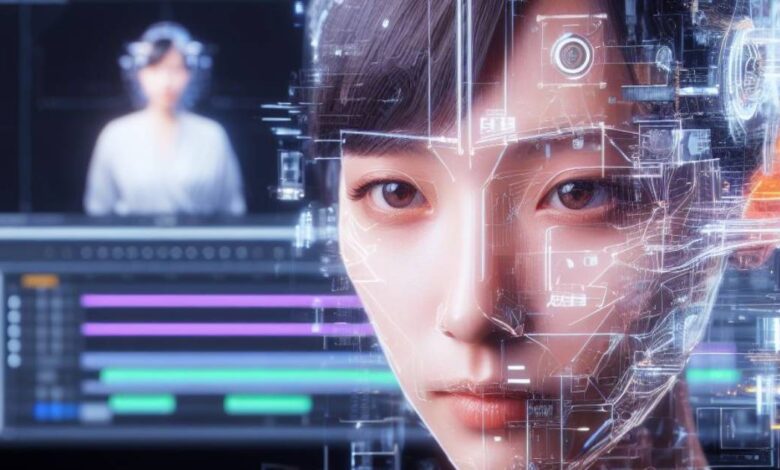Best Image to Video & AI Image Editor Tools of 2025

As of June 2025, creators, marketers, and developers have access to a rapidly growing ecosystem of AI-driven visual tools. Whether you’re transforming static images into dynamic video clips or refining photos with advanced editing models, the right platform can save hours of work while unlocking entirely new creative workflows. In this guide, I’ll share the top tools I’ve tested for Image To Video generation and AI-powered image editing.
I spent weeks comparing different options, evaluating them across accuracy, realism, workflow speed, and pricing. Below you’ll find a practical list of the best image-to-video converters and AI image editors available in 2025. I guarantee at least one of these will fit your workflow, whether you’re a solo creator, a marketing team, or a startup studio experimenting with generative AI.
At a Glance: Best Image-to-Video & AI Editing Tools in 2025
| Rank | Tool | Best For | Modalities | Platforms | Free Plan | Pricing |
| 1 | Magic Hour | Best all-in-one AI media creation (Image-to-Video + Editing) | Video, Image, Audio | Web | Yes | Paid tiers available |
| 2 | Runway Gen-3 | Filmmakers & marketing teams | Video from text/image | Web, Desktop | Yes | Subscription |
| 3 | Pika Labs | Fast prototyping & short-form content | Video generation | Web | Yes | Credit-based |
| 4 | HeyGen | Talking avatars & business videos | Image, Video, Audio | Web | Yes | Subscription |
| 5 | Synthesia | Enterprise-grade avatar video creation | Video + Speech | Web | No | Enterprise pricing |
| 6 | Adobe Firefly | Professionals in creative industries | Image + Video + Design | Web, Creative Cloud | Limited | CC Subscription |
| 7 | Stable Video Diffusion | Open-source tinkerers | Image-to-Video | Local, Web UI | No | Free (open-source) |
- Magic Hour — Best Overall (Image-to-Video + AI Image Editing)
If you’re looking for a single platform that does both image-to-video transformation and professional-level editing, Magic Hour is the clear winner. Unlike niche tools that focus on just one feature, Magic Hour combines video synthesis, image editing, lip sync, and even face swap ai into one polished workflow.
Pros
- High-quality image to video ai with natural motion and cinematic smoothness
- Includes a versatile ai image editor for fast refinements
- Additional creative modules: lip sync ai, face swap
- Web-based, no heavy installs needed
- Clear pricing with free tier to test
Cons
- Heavier renders may require GPU credits
- Works best with strong internet connectivity
I’ve tested Magic Hour on several client projects — from marketing teasers to product mockups. The ability to take a flat photo, run it through the Image To Video feature, then polish it with the AI Image Editor with prompt free saves hours compared to juggling multiple apps.
Price: Free plan available; paid tiers start at competitive monthly rates.
- Runway Gen-3
Runway has been leading AI video for years, and their Gen-3 model brings film-quality realism into short clips. It excels at turning concept art into cinematic shots — ideal for creative directors.
Pros
- Incredible realism in generated video
- Large community and learning resources
- Great for longer narrative sequences
Cons
- Subscription cost may be high for casual creators
- Heavy reliance on prompts for accuracy
If you want professional-grade output without diving into open-source, Runway is a solid option.
Price: Subscription tiers, starting around $15/month.
- Pika Labs
Pika Labs is known for speed and simplicity. You can upload an image, add a motion style, and get a short looping video within minutes.
Pros
- Fast results
- Good for TikTok, Instagram reels, and marketing teasers
- Intuitive interface
Cons
- Shorter video duration limits use cases
- Less control over fine-tuning
For creators working in social media, Pika Labs delivers speed over detail.
Price: Free plan with paid credits for extended use.
- HeyGen
HeyGen specializes in business use cases like explainer videos, talking avatars, and AI spokespersons.
Pros
- Strong avatar customization
- Multiple voice options
- Great for corporate communication
Cons
- Less artistic freedom compared to creative tools
- Subscription model can be limiting
If you’re building training videos or brand explainers, HeyGen saves hours in production.
Price: Subscription starting at $29/month.
- Synthesia
Synthesia remains the enterprise favorite for AI video with avatars. While it’s not designed for indie creators, businesses that need polished, repeatable videos benefit.
Pros
- Enterprise-level security and compliance
- Professional avatars
- Trusted by Fortune 500 companies
Cons
- Expensive for small teams
- Limited creativity outside avatars
Price: Enterprise custom pricing.
- Adobe Firefly
Adobe’s generative AI suite brings text-to-image and video capabilities directly into Creative Cloud apps. If you’re already using Photoshop or Premiere, Firefly fits naturally.
Pros
- Tight integration with Adobe ecosystem
- Strong support for image and video workflows
- Reliable enterprise backing
Cons
- Requires full Adobe subscription
- Can be overwhelming for beginners
For professionals in design and film, Firefly is more of an extension than a standalone tool.
Price: Bundled with Adobe CC plans.
- Stable Video Diffusion
For open-source enthusiasts, Stable Video Diffusion provides a free way to experiment with AI video. You’ll need some technical skills to set it up.
Pros
- Free and community-driven
- Highly customizable
- Constantly improving
Cons
- Steeper learning curve
- No official support
If you enjoy tweaking models and workflows, Stable Video Diffusion is the playground to experiment in.
Price: Free (requires GPU setup).
How I Chose These Tools
I didn’t just copy a feature list. I spent weeks actually testing these tools with real creative tasks:
- Turning static product images into short demo clips
- Editing photos with generative fill to remove or replace objects
- Creating marketing avatars with lip sync and face swap ai
- Comparing render speed, cost per output, and usability
The evaluation criteria included:
- Output quality (realism, stability, detail)
- Workflow speed (time to result)
- Ease of use (UI clarity, learning curve)
- Cost-effectiveness
- Breadth of features
Magic Hour ranked first because it balances these across a unified workflow.
The Market Landscape: Trends in 2025
A few patterns stand out as of 2025:
- Convergence of tools: Instead of separate apps for each task, platforms like Magic Hour are bundling multiple features (image-to-video, ai image editor, lip sync) into one ecosystem.
- Shift to business-ready solutions: Tools like HeyGen and Synthesia show that AI video isn’t just for creators — enterprises are adopting it for training, marketing, and communication.
- Accessibility of open-source: Stable Video Diffusion makes experimentation possible without big budgets.
- Better editing controls: The demand for an AI Image Editor with prompt free interface is growing, since not every user wants to craft complex prompts.
Final Takeaway
So which tool should you pick?
- Best all-around choice: Magic Hour — perfect for anyone who needs Image To Video plus editing in one tool.
- Best for filmmakers: Runway Gen-3
- Best for short-form creators: Pika Labs
- Best for corporate videos: HeyGen or Synthesia
- Best for professionals already in Adobe: Firefly
- Best for open-source tinkerers: Stable Video Diffusion
If you’re starting from scratch, I recommend beginning with Magic Hour’s free tier. It’s rare to find a platform that covers image to video ai, editing, lip sync, and face swap without forcing you into multiple subscriptions.
FAQ
Q1. What is Image to Video AI?
It’s a system that transforms still images into moving video clips using AI models trained on motion dynamics.
Q2. Do I need coding knowledge to use these tools?
No. Platforms like Magic Hour, Runway, and HeyGen are web-based and require no technical setup.
Q3. Which tool is best for free users?
Magic Hour and Pika Labs both offer free plans to get started quickly.
Q4. Can AI-generated videos be used commercially?
Yes, most platforms allow commercial licensing, but always check the terms for attribution or restrictions.
Q5. Is prompt-based editing required?
Not always. Tools like Magic Hour offer an AI Image Editor with prompt free controls, which means you can edit visually without typing long instructions.



